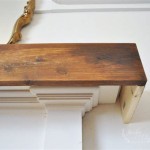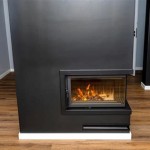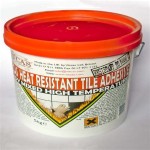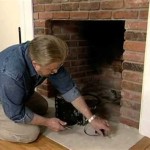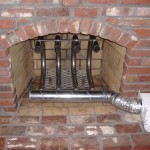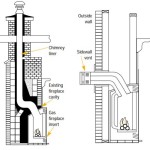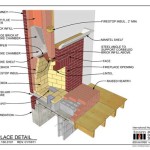Fireplace Heat Shield: Protecting Your Home and Family
Fireplaces offer warmth and ambiance, creating a focal point within a home. However, the intense heat generated by a fireplace can also pose a significant risk to nearby combustible materials. This is where the fireplace heat shield becomes a crucial safety component. A fireplace heat shield is designed to reduce the radiant heat emitted from the fireplace, preventing overheating and potential fires. Understanding the function, types, installation, and benefits of fireplace heat shields is essential for homeowners who utilize their fireplaces regularly.
The primary function of a fireplace heat shield is to mitigate the heat transfer from the fireplace to surrounding walls, mantels, and other flammable surfaces. This mitigation is achieved through a combination of reflection and insulation. The shield acts as a barrier, reflecting a significant portion of the radiant heat back into the firebox. Simultaneously, the shield’s insulating properties absorb some of the heat, preventing it from reaching the combustible materials behind it. Without a heat shield, prolonged exposure to high temperatures can cause materials such as wood, drywall, and wallpaper to ignite, leading to a house fire.
The effectiveness of a fireplace heat shield is measured by its ability to reduce the temperature of the surrounding surfaces. Building codes often specify minimum clearance requirements between the fireplace and combustible materials. Heat shields can help homeowners meet these requirements, allowing them to safely install fireplaces in closer proximity to walls and mantels. This is particularly important in older homes where existing clearances may not meet current safety standards.
The choice of a heat shield depends on several factors, including the type of fireplace, the available space, and the desired aesthetic. Different materials offer varying levels of heat resistance and insulation. Proper installation is critical to ensure that the heat shield functions effectively and provides adequate protection. Failing to install the heat shield correctly can negate its benefits and leave the surrounding materials vulnerable to overheating.
Understanding the Types of Fireplace Heat Shields
Fireplace heat shields are available in a variety of materials and designs, each offering different levels of protection and aesthetic appeal. The selection process should consider the specific needs of the fireplace installation and the surrounding environment.
Metal Heat Shields: These are among the most common types of heat shields. They are typically constructed from steel or aluminum and are designed to reflect radiant heat. Metal heat shields are often used in situations where space is limited, as they can be relatively thin while still providing significant heat reduction. The effectiveness of a metal heat shield depends on its reflectivity and the amount of air space between the shield and the combustible material.
Insulated Heat Shields: These types of shields incorporate an insulating layer in addition to a reflective metal surface. The insulating material, such as mineral wool or ceramic fiber, helps to absorb heat and prevent it from transferring to the surrounding materials. Insulated heat shields offer superior protection compared to metal shields alone and are often used in high-heat applications.
Stone and Tile Heat Shields: While often more decorative, stone and tile can also function as heat shields when properly installed with a non-combustible backing and adequate air space. These materials can absorb and dissipate heat, reducing the risk of overheating nearby surfaces. Stone and tile heat shields are often integrated into the fireplace surround, creating a seamless and aesthetically pleasing design.
Custom Heat Shields: In some cases, a custom heat shield may be necessary to accommodate unique fireplace designs or challenging installation conditions. Custom heat shields can be fabricated from a variety of materials and can be tailored to fit specific dimensions and shapes. Consulting with a qualified fireplace installer or manufacturer is recommended when considering a custom heat shield.
The chosen material should be fire-resistant and non-combustible. Metal, stone, and specially treated wood are common choices. The thickness of the shield also plays a role in its effectiveness. Thicker shields generally offer better insulation and heat absorption.
Key Considerations for Installation
Proper installation is paramount for a fireplace heat shield to function as intended. Incorrect installation can render the shield ineffective or even create new hazards. Therefore, careful planning and adherence to manufacturer's instructions are crucial.
Clearance Requirements: Building codes often specify minimum clearance requirements between the fireplace and combustible materials. The heat shield must be installed in a manner that meets or exceeds these requirements. This may involve creating an air space between the shield and the wall or using standoffs to maintain proper distance. Consult local building codes and the fireplace manufacturer's instructions to determine the specific clearance requirements for the installation.
Air Circulation: Adequate air circulation is essential for dissipating heat behind the heat shield. Without proper ventilation, heat can build up and defeat the purpose of the shield. Most heat shield systems are designed to allow for airflow behind the shield, often through small vents or openings. Ensure that these vents are not obstructed during installation.
Secure Attachment: The heat shield must be securely attached to the wall or fireplace structure. Use appropriate fasteners and mounting hardware to ensure that the shield remains firmly in place, even under high-heat conditions. Follow the manufacturer's recommendations for securing the shield, and double-check that all fasteners are tightened properly.
Professional Installation: While some homeowners may be comfortable installing a fireplace heat shield themselves, professional installation is often recommended. A qualified fireplace installer has the experience and expertise to ensure that the shield is installed correctly and that all safety requirements are met. This is particularly important for complex installations or when dealing with older homes.
Before beginning the installation, it is essential to gather all necessary tools and materials. This includes the heat shield itself, fasteners, measuring tools, and safety equipment such as gloves and eye protection. Always consult the manufacturer's instructions for specific guidance on installation procedures.
The Benefits of Using a Fireplace Heat Shield
Investing in a fireplace heat shield provides numerous safety and practical benefits, making it a worthwhile addition to any home with a fireplace. These benefits extend beyond simple fire prevention, encompassing energy efficiency and property value as well.
Fire Prevention: The most significant benefit of a fireplace heat shield is its ability to prevent fires. By reducing the radiant heat that reaches combustible materials, the shield minimizes the risk of ignition. This is particularly important for homes with wooden walls, mantels, or other flammable surfaces near the fireplace.
Increased Energy Efficiency: While primarily a safety device, a heat shield can also contribute to improved energy efficiency. By reflecting heat back into the room, the shield reduces heat loss through the walls and helps to maintain a more consistent temperature. This can result in lower heating bills and a more comfortable living environment.
Protection of Surrounding Materials: In addition to preventing fires, a heat shield can also protect surrounding materials from heat damage. Prolonged exposure to high temperatures can cause wood to dry out and crack, paint to blister and peel, and wallpaper to fade or discolor. Installing a heat shield can help to preserve the appearance and integrity of these materials, extending their lifespan.
Compliance with Building Codes: Many building codes require the use of heat shields in certain fireplace installations. Installing a heat shield ensures compliance with these codes and can help to avoid potential fines or penalties. Additionally, compliance with building codes can provide peace of mind knowing that the fireplace installation meets established safety standards.
Aesthetic Enhancement: While primarily functional, some heat shields can also enhance the aesthetic appeal of the fireplace. Decorative heat shields are available in a variety of styles and materials, allowing homeowners to choose a shield that complements their décor. These shields can add a touch of elegance or sophistication to the fireplace while also providing essential protection.
The long-term savings in potential repairs, coupled with the enhanced safety and peace of mind, make a fireplace heat shield a valuable investment for any homeowner with a working fireplace. The shield protects the physical structure of the house as well as the people inside.
In conclusion, fireplace heat shields are crucial safety components for homes with fireplaces. They protect combustible materials from the intense heat generated by the fire, reducing the risk of fire. Choosing the right type of heat shield, ensuring proper installation, and understanding the benefits are essential steps for homeowners to take to ensure the safety and efficiency of their fireplaces. By carefully considering these factors, homeowners can enjoy the warmth and ambiance of a fireplace without compromising the safety of their home and family.

Enhance Your Fireplace With A Wood Stove Heat Shield Charnwood Stoves

Fireplace Surrounds Heat Shields For Stoves Scarlett Fireplaces

Homesaver 47 Inch Mantel Heat Shield With Angled Lip

How To Diy A Wood Stove Heat Shield Small Life

How To Build Heat Shields For Wood Stoves Tiny Stove

Fireplace Surrounds Heat Shields For Stoves Scarlett Fireplaces

Wood Stove Heat Shield Protection Ac05550 Friendly Fires

Fireplace Surrounds Heat Shields For Stoves Scarlett Fireplaces

Another Interesting Heat Shield Wood Stove Hearth Surround

Vlaze Heat Shield 800mm X 1800mm Bonfire Fireplaces
Related Posts

